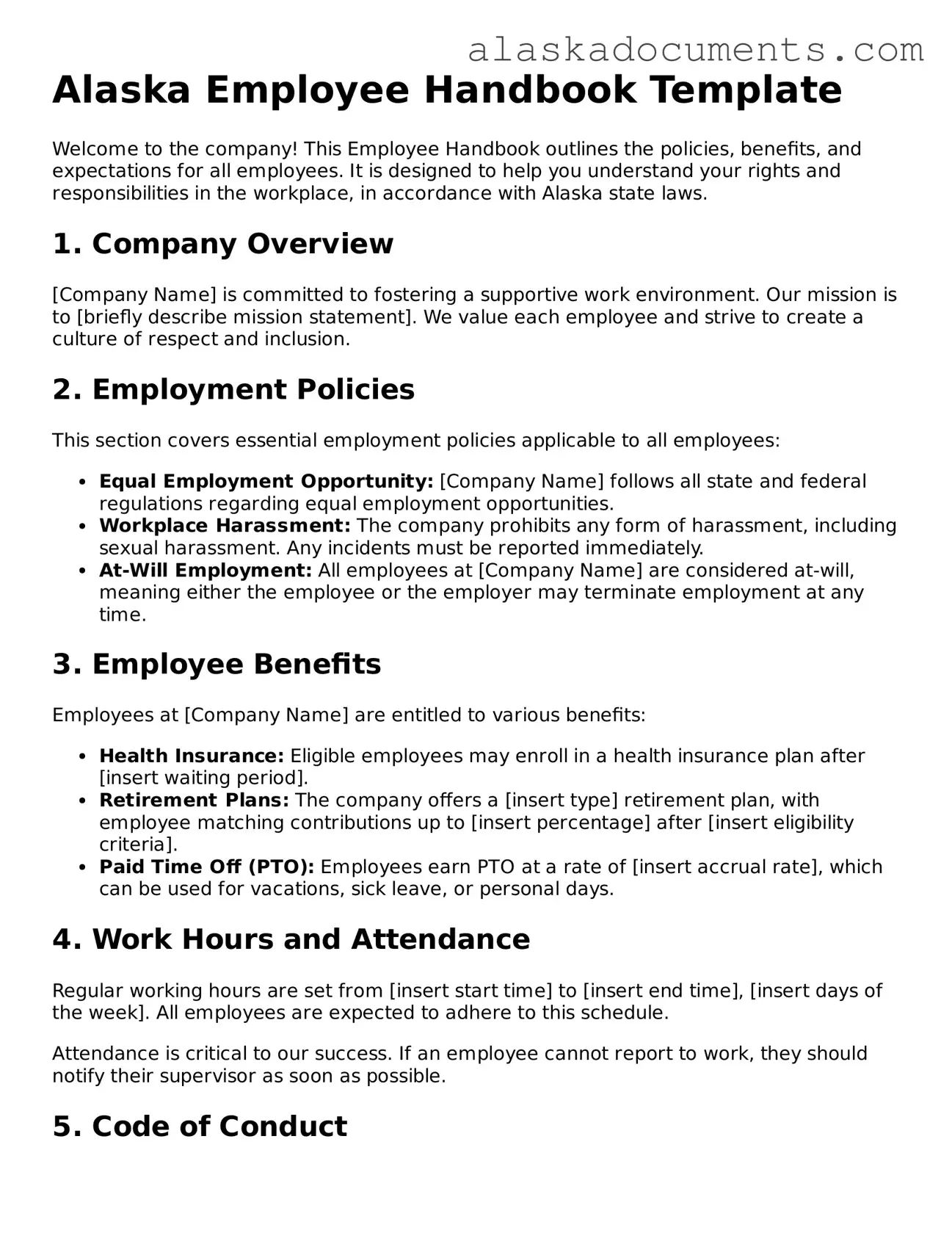Alaska Employee Handbook Template
Welcome to the company! This Employee Handbook outlines the policies, benefits, and expectations for all employees. It is designed to help you understand your rights and responsibilities in the workplace, in accordance with Alaska state laws.
1. Company Overview
[Company Name] is committed to fostering a supportive work environment. Our mission is to [briefly describe mission statement]. We value each employee and strive to create a culture of respect and inclusion.
2. Employment Policies
This section covers essential employment policies applicable to all employees:
- Equal Employment Opportunity: [Company Name] follows all state and federal regulations regarding equal employment opportunities.
- Workplace Harassment: The company prohibits any form of harassment, including sexual harassment. Any incidents must be reported immediately.
- At-Will Employment: All employees at [Company Name] are considered at-will, meaning either the employee or the employer may terminate employment at any time.
3. Employee Benefits
Employees at [Company Name] are entitled to various benefits:
- Health Insurance: Eligible employees may enroll in a health insurance plan after [insert waiting period].
- Retirement Plans: The company offers a [insert type] retirement plan, with employee matching contributions up to [insert percentage] after [insert eligibility criteria].
- Paid Time Off (PTO): Employees earn PTO at a rate of [insert accrual rate], which can be used for vacations, sick leave, or personal days.
4. Work Hours and Attendance
Regular working hours are set from [insert start time] to [insert end time], [insert days of the week]. All employees are expected to adhere to this schedule.
Attendance is critical to our success. If an employee cannot report to work, they should notify their supervisor as soon as possible.
5. Code of Conduct
To maintain a professional environment, employees must adhere to the following code of conduct:
- Be respectful to colleagues and customers.
- Follow all company policies and procedures.
- Maintain confidentiality of sensitive company information.
6. Safety Policies
Safety is a top priority at [Company Name]. All employees must follow safety protocols and report any unsafe conditions to their supervisor.
7. Acknowledgment of Receipt
I acknowledge that I have received a copy of the Employee Handbook for [Company Name]. I understand it is my responsibility to read and comply with the policies within it.
Employee Name: ____________________________
Date: ____________________
8. Changes to the Handbook
[Company Name] reserves the right to revise this handbook at any time. Employees will be notified of significant changes.
For any questions regarding the policies outlined in this handbook, please contact [Insert HR Contact Information].
